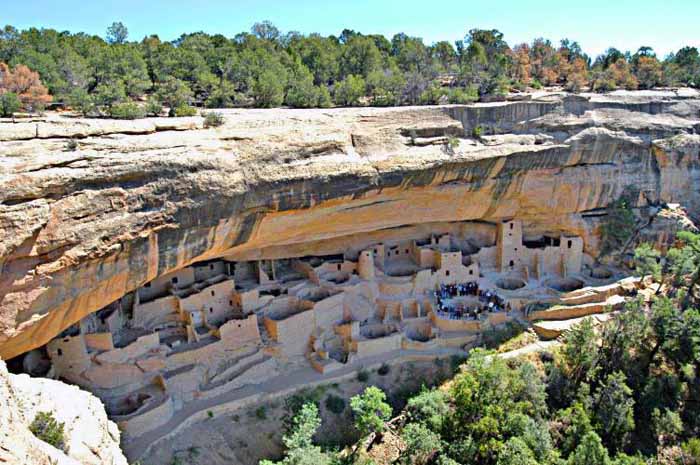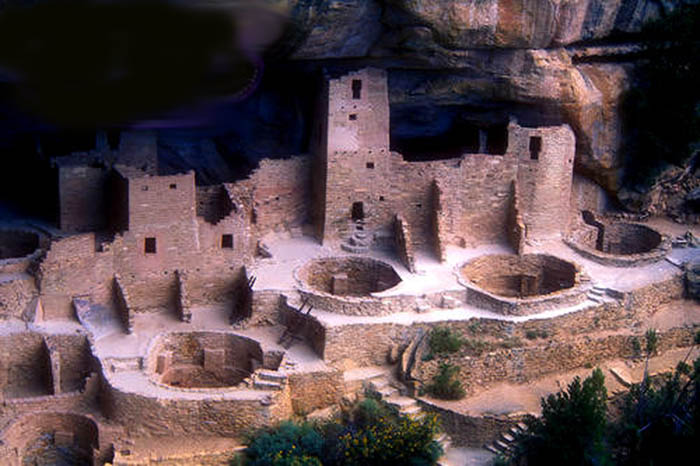
Mesa Verdi was home to the Anasazi Indians for more than 1,000 years. The people that first built their houses here at the time of the Roman Empire farmed the mesas, plateaus, river bottoms, and canyons. They created a thriving, populous civilization that eventually raised towers and built hundred-room cities in the cliffs and caves of Mesa Verde. The Cliff Palace is the largest cliff dwelling in North America. The structure built by the Ancient Pueblo Peoples is located in Mesa Verde National Park in their former homeland region. The cliff dwelling and park are in the southwestern corner of Colorado, in the Southwestern United States.
Mesa Verde National Park is a National Park and World Heritage Site located in Montezuma County, Colorado. It protects some of the best preserved Ancestral Puebloan archaeological sites in the United States. Created by President Theodore Roosevelt in 1906, the park occupies 52,485 acres (21,240 ha) near the Four Corners region of the American Southwest. With more than 4,300 sites, including 600 cliff dwellings, it is the largest archaeological preserve in the U.S. Mesa Verde (Spanish for "green table") is best known for structures such as Cliff Palace, thought to be the largest cliff dwelling in North America.
Starting c.7500 BCE, Mesa Verde was seasonally inhabited by a group of nomadic Paleo-Indians known as the Foothills Mountain Complex. The variety of projectile points found in the region indicates they were influenced by surrounding areas, including the Great Basin, the San Juan Basin, and the Rio Grande Valley. Later, Archaic people established semi-permanent rockshelters in and around the mesa. By 1000 BCE, the Basketmaker culture emerged from the local Archaic population, and by 750 CE the Ancestral Puebloans had developed from the Basketmaker culture.

The Mesa Verdeans survived using a combination of hunting, gathering, and subsistence farming of crops such as corn, beans, and squash. They built the mesa's first pueblos sometime after 650, and by the end of the 12th century, they began to construct the massive cliff dwellings for which the park is best known. By 1285, following a period of social and environmental instability driven by a series of severe and prolonged droughts, they abandoned the area and moved south to locations in Arizona and New Mexico, including Rio Chama, Pajarito Plateau, and Santa Fe. Read more
The typical Anasazi village consisted of buildings housing about 100 men, women and children. Dating back to 700 A.D., shaped, closely fitting stone or adobe (bricks made of sand, clay and straw) masonry formed complex apartment structures rising atop mesas (flat high grounds) or inside natural caves at the base of canyons. The ground-floor apartments were grain storage units while ladders allowed access to the different 10-by-20-foot living compartments above. Crops grown by the villages included maize (corn), gourds, squash, beans and cotton. Different phases of the culture produced finely made baskets and beautifully designed pottery. From Ellie Crystal